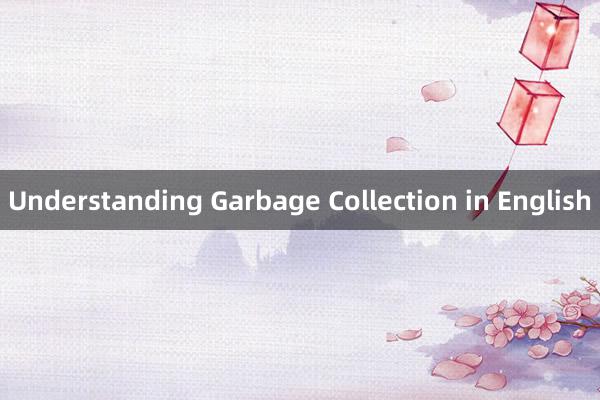
# Understanding Garbage Collection in English
东兰人才网_东兰招聘网_东兰人才招聘网Garbage collection is a crucial aspect of modern programming languages that manage memory automatically, ensuring efficient use and preventing resource leaks. In English-speaking contexts, understanding garbage collection is essential for developers aiming to write robust and maintainable software.
At its core, garbage collection (GC) refers to the process by which a program automatically reclaims memory that is no longer in use. This mechanism is particularly important in high-level programming languages like Java, Python, and C#, where manual memory management is either cumbersome or entirely absent. The primary goal of garbage collection is to free developers from the burden of explicitly deallocating memory, allowing them to focus on more critical aspects of their code.
The concept of garbage collection revolves around identifying "garbage" objects—those that are no longer reachable by any part of the program. Once these objects are identified, the system reallocates their memory for future use. This process is typically performed by a garbage collector, a component within the runtime environment of the language.
There are several strategies for implementing garbage collection. One common method is reference counting, where each object maintains a count of references pointing to it. When this count drops to zero,沈阳万达文华酒店 the object is considered unreachable and can be reclaimed. Another popular approach is tracing garbage collection, 越西人才网_越西招聘网_越西人才市场 which involves periodically pausing the application to trace all reachable objects from a set of root nodes (such as global variables or active threads). Objects not reached during this traversal are deemed unreachable and are collected.
In addition to basic memory management, 浙江宏振机械模具集团有限公司 modern garbage collectors employ sophisticated techniques to optimize performance. For instance, generational garbage collection divides the heap into generations based on the age of objects,斑马泵阀英才网-泵阀人才网-泵阀招聘网-泵阀英才网 assuming that most objects are short-lived. By focusing primarily on younger generations, the collector minimizes pause times and improves efficiency. Concurrent garbage collection further enhances performance by running alongside the application, reducing interruptions caused by full garbage collection cycles.
While garbage collection simplifies development, it is not without trade-offs. For example, deterministic memory management (as seen in languages like C++) allows programmers to release resources immediately when they are no longer needed. In contrast, garbage-collected languages may introduce latency due to collection pauses. Moreover, certain patterns, such as cyclic references, can complicate garbage collection in some implementations.
In conclusion, garbage collection is a vital feature in many programming languages, enabling efficient memory management and reducing the risk of memory-related bugs. By understanding how garbage collection works, developers can better appreciate the strengths and limitations of different languages and make informed decisions about when and how to use them. Whether you're working with Java, Python, or another garbage-collected language斑马泵阀英才网-泵阀人才网-泵阀招聘网-泵阀英才网, grasping the principles of garbage collection is key to writing effective and reliable software.
